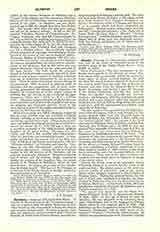

Olympus, a titular see of Lycia in Asia Minor. It was one of the chief cities of the “Corpus Lyciacum”, and was captured from the pirate, Zenicetas, by Servilius Isauricus who transported to Rome the statues and treasure he had stolen. Its ruins (a theatre, temples, and porticoes) are located south of the vilayet of Koniah, at Delik-Tash (Pierced Stone), so-called because of a large rock forming a natural arch. The town was built near Mount Olympus or Pheenicus, which gave forth constant fiery eruptions throughout antiquity; the ancients called it Chimaera and depicted it as a monster which had been vanquished by Bellerophon. Several ancient authors knew that this was only a natural phenomenon. (The Turks call it Yanar Tash—Burning Stone.) Several “Notitiae Episcopatuum” mention Olympus among the suffragan sees of Myra until the thirteenth century. Only four bishops are known, one of whom was Saint Methodius (q.v.).
S. PETRIDES

